#the things i do for an authorship .
Explore tagged Tumblr posts
Text
me when i actually have to apply stuff i learned from my college degree at the job i got specifically so that i could apply stuff i learned from my college degree: 😨
#statistics my best friend and worst enemy#spent an hour ripping my hair out making this graph#the things i do for an authorship .#/astro posts
11 notes
·
View notes
Text
I'm gonna get to work on my fl lore vid finally bc w the kickstarter coming its very good time to like. Make an intro video for newbies to the world of fl. I know fl really really well (autism wins) but I'm soooooo nervous about it. It's not like I'll get stuff wrong, I'll have a big caveat about fl lore being super open ended on purpose! But it'll be something people will see and more link My 'Job' to my fl passion. I really really want to do it. But I'm just self conscious somehow.
I just can't be bothered to do private accounts hence just admitting my identity publicly online, but I do wish I was better at it. At this point I can't like, go into hiding and resurface as a DIFFERENT freak who is passionate about suncrab yknow. I'm drinking red wine rn.
#i do advise to everyone to use pennames always etc#in that my penname for authorship is barely one and i wish i had gone more anon.#its not like ive ever suffered negative effects i just dont need to be Perceoved#yes though. soz for rambling. im just nervous ill make a fool of myself in front of cool fl people#the biggest thing about being a guy on youtube w a fair audience? um. well. im actually just a guy still#nothing changes actually only in a very weird sense of observation
3 notes
·
View notes
Text
god if no one else got me. i know the drawn to life soundtrack got me.
#how much of adulthood is just fucking up paperwork? and finding out months later how badly you fucked it up?#and trying to determine the fewest amount of people you need to share that with in order to fix it?#inside of me there is a cartoony priest and a cartoony criminal and they are both trying SO hard to spare me the indignities of living#by threatening to shoot me dead if i fuck up one more time. swear to god.#i love doing everything right the first time forever. also i love getting away with things and never having to apologize for anything ever.#but see. i also love being a normal person with a job and proportionate emotional reactions. im sure you can see the conflict.#im sure you can see why im listening to history's best video game soundtrack right now.#but LE SIGH its Fine no one's Dead. it's FINE i'll figure it out TOMORROW or FRIDAY better that i noticed now instead of tomorrow evening#and im sure worse fuckups have happened etc. etc.#and if they FIRE ME i will throw myself into pizzamaking and failed authorship. as my chosen careers. backup plan see#AUGH. ANYWAY.
2 notes
·
View notes
Text
Working in publishing, my inbox is basically just:
Article on the Horrors of AI
Article on How AI Can Help Your Business
Article on How AI Has Peaked
Article on How AI Is Here to Stay Forever
Article on How AI Is a Silicon Valley Scam That Doesn't Live Up to the Promise and In Fact Can't Because They've Literally Run Out of Written Words to Train LLMs On
#artificial generation fuckery#in point of fact we're lumping a lot of things into 'AI' so probably bits of them are all true#i think AI narration probably is here to stay because we've been mass training that for ages (what did you think alexa and siri were?)#i think ai covers will stick around on the low price point end unless those servers go the way of crypto#but as with everywhere they'll be limited because you can't ask an ai for design alts#(and do you guys know how many fucking passes it takes to make minute finicky changes to get exec to sign off on a cover?)#i think ai translation for books will die on the vine - you'd have to feed the whole text of your book to the ai and publishers hate that#ai writing is absolute garbage at long form so it will never replace authorship#it's also not going to be used to write a lot of copy because again you'd have to feed the ai your book and publishers say no way#like the thing to keep in mind is publishers want to save money but they want to control their intellectual property even more#that's the bread and butter#the number 1 thing they don't want to do is feed the books into an LLM#christ we won't even give libraries a fair deal on ebooks you think they're just going to give that shit away to their competitors??#but also i don't think the server/power/tech issue is sustainable for something like chatgpt and it is going to go the way of crypto#is humanity going to create an actual artificial intelligence that can write and think and draw?#yeah probably eventually#i do not think this attempt is it#they got too greedy and did too much too fast and when the money dries up? that's it#maybe I'm wrong but i just think the money will dry out long before the tech improves#hwaelweg's work life
4 notes
·
View notes
Text
i didnt dislike to die in june but. diversity win! the soldiers ravaging korea are teenage lesbians.
#i feel insane like if you wanted to make teen girls go to war and kiss could you not just#invent a conflict.#or choose a war to send them to that wasnt the one where they were allied with nazi germany. idk.#meposting#the beauty of authorship is that you coulda just chose not to do that#one thing youll notice about the other 'teen lesbians are the frontline in a conflict' yuri - kimishinu - is that its a fantasy world.#and not. ww2.
0 notes
Text
I love when people read too much into things. Like, did the author intent this interpretation? Probably not but fuck that guy, you make the rules now
#I just love the concept that whenever we interpret something we gain a sort of sharer authorship#Like isnt this what art is for?#For me to make up beautiful meanings around it?#Why cant people just accept the existence of beautiful things as they are#why do they need a reason#isnt beauty reason enough?
0 notes
Text
my supervisor is having me write this grant proposal on my own but she said today in our meeting that she'd like to give me co-authorship credit.
#qu'est que c'est ''co-authors''#i literally wrote the first draft with no help from her about how to do the thing#and her instructions to me for this second draft were basically ''let's focus on [x outcome] and deliver me a new draft by friday''#welcome to academia#also let's be clear: she said she'd LIKE to give me co-authorship#but implied it might not be possible
1 note
·
View note
Text
*reading text by foucault* i'm sure he won't talk about signs. this text isn't about that.
*text discusses signifiers and signified*

#hobtalks#hobtalks thesis#its about authorship it doesnt... need to discuss signs#but i guess if ur famous for something you want to bring that thing up every chance you get#i respect the grind foucault i do. im still annoyed though
1 note
·
View note
Text
Beware, the long post incoming. Pro tips for artists who work on commissions!
DISCLAIMER: I do not have, like, a HUGE online following and can’t be called a popular or viral artist, but I do have some experience and I’ve been working as a freelance artist for more that five years, so I could share a few tips on how to work with clients with my fellow artists. Scroll down for the short summary!
First of all, you always need to have your Terms of Service written down in a document that is accessible for your potential clients. And by terms of service I don’t mean a set of rules like “I don’t draw mecha, anthro and N/S/F/W”. There is much more into it, than you may think when you first start drawing commissions.
You’ll need to understand how copyright law/author’s rights in your country works (for example, US copyright or Russian author’s rights, be sure to check your local resources). There are a bunch of sites where you can actually read some legal documents (. I know it might be boring, but TRUST me, you WILL need this knowledge if you choose this career path.
Russia, for example, is plagued with shops selling anime merchandise. The merchandise is usually printed somewhere in the basement of the shop and the shop owners literally rip off other people’s intellectual property. If the artist ask them to remove their IP from the shop the owners usually try to fool them with lies about how the IP works. They will tell you, that you have to register copyright on every single drawing and if you don’t do it anyone can reproduce and sell your artwork. In reality, copyright law in most countries simply doesn’t work this way. Once you create an original work and fix it, take a photograph, write a song or blog entry, paint an artwork, you already are the author and the owner. Yes, there are certain procedures of copyright registration, which is only a step to enhance the protection, but you become an author the very moment you create a piece of art, and no one have a right to take your creation from you. Knowing your rights is essential.
Some of your commissioners may try to scam you too, but most of them might simply not be aware of how copyright law works. I literally had people asking me questions whether or not the character I am commissioned to draw becomes MY intellectual property. I literally had to convince the person (who was legit scared, since the commissioned piece was going to be a first image of his character ever created) otherwise. If you have an idea of the character written down or fixed in any other form such as a collage, a sketch, or a concept art -- the character is yours. Artist may have rights to the image they create, but not the character itself. Your potential commissioner must acknowledge that their characters, settings and etc. is still theirs, while your artwork is yours, if your contract doesn’t state otherwise. You can sell the property rights on your artwork to your commissioner if you want, but it is unnecessary for non-commercial commissions. And I strongly advice you to distinguish the non-commercial commissions from commercial ones and set the different pricing for them. Even if you sell ownership of your artwork to your commissioner, you can not sell the authorship. You will always remain an author of your artwork, thus you still have all the author’s rights stated in the legal documents.
Another thing that is absolutely necessary to be stated in your terms of service is information whether (and when) it is possible to get a refund from you. You absolutely have to write it down: no. refunds. for finished. artworks.
You have already invested time and effort to finish an artwork. The job is done and the money is yours. I’ve heard stories of commissioners demanding refund a few months later after the commission was finished and approved by the commissioners, because, quote “I do not want it anymore”. Commissioning an artist doesn’t work this way, artwork is not an item purchased on shein or aliexpress that can be sent back to the seller. It is not a mass production. It is a unique piece of art. Example: My friend once drew a non-commercial commission for a client who tried to use it commercially later on. She contacted him and reminded of the Terms of Service he agreed with, offering him to pay a fee for commercializing the piece instead of taking him to the court or starting a drama. He declined and suddenly demanded a full refund for that commission via Paypal services. My friend contacted the supports and showed them the entire correspondence with that client. She also stated that the invoice he paid included a link to the Terms and Service he had to agree with if he pays that invoid. The money were returned to her.
However, partial refund can be possible at the certain stage of work. For example, the sketch is done, but something goes horribly wrong. Either the client appeared to be a toxic person, or an artist does not have a required skill to finish the job. I suggest you keep the money for the sketch, but refund the rest of the sum. It might be 50/50 like I suggested to my clients before (when I still could work with Paypal), but it really depends on your choise. I suggest not doing a full refund though for many reasons: not only you make yourself vulnerable, but you also might normalize a practice harmful to other artists this way.
The main reason why full refund when the sketch/line-art are done must not be an option is that some clients may commission other artists with lower prices to finish the job. This brings us to the next important point: you absolutely need to forbid your clients from altering, coloring or overpainting your creation or commission other artists to do so. This also protects your artwork from being cropped, changed with Instagram filters or even being edited into a N/S/F/W image. Speaking of which. If you create adult content, you absolutely need to state that to request such a commission, your commissioner must at least be 18/21 years old (depending on your country). And as for the SFW commissions you also have to state that if someone underage commissions an artwork from you it is automatically supposed that they have a parental concern.
There is also a popular way to scam artist via some payment systems, called I-did-not-receive-a-package. Most of the payment systems automatically suppose that you sell goods which have to be physically delivered via postal services. This is why it is important to state (both in the Terms of Service and the payment invoice itself) that what commissioner is about to receive is a digital good.
And the last, but not the least: don’t forget about alterations and changes the commissioner might want to make on the way. Some people do not understand how difficult it may be to make a major change in the artwork when it is almost finished. Always let your commissioners know that all the major changes are only acceptable at early stages: sketch, line-art, basic coloring. Later on, it is only possible to make the minor ones. I prefer to give my commissioner’s this info in private emails along with the WIPs I send, but you can totally state it in your Terms of Service. I do not limit the changes to five or three per commission, but I really do appreciate it when I get all the necessary feedback in time.
To sum this post up, the info essential for your Terms of Service doc is:
- The information on whether or not your commissions are commercial or non-commercial. If they are non-commercial, is there a way to commercialize them? At what cost?
- The information on author’s and commissioner’s rights;
- The information on whether (and when) refunds are possible;
- The prohibition of coloring, cropping, overpainting and other alterations;
- The information on whether or not you provide the commissioner with some physical goods or with digital goods only;
- Don’t forget about your commissioner’s age! If you work with client who is a minor, a parental consern is required. And no n/s/f/w for underage people!
- You may also want to include that you can refuse to work on the commission without explanation in case you encounter a toxic client or feel like it might be some sort of scam.
- I also strongly suggest you work with prepay, either full or 50% of total sum, it usually scares off the scammers. I take my prepay after me and my client agree on a rough doodle of an overall composition.
- I also include the black list of the themes: everyting offensive imaginable (sexism, homophobia, transfobia, racism, for N/S/F/W artists it also might be some certain fetishes and etc). Keep your reputation clean!
- Ban N/F/T and blacklist the commissioners who turn your artworks into them anywayss, don’t be shy <3
These are the things that are absolutely necessary but are so rarely seen in artists’ Terms of Service that it makes me sad. Some of these tips really helped me to avoid scams and misunderstandings. I really hope it helps you all!
#artist's terms of service#terms of service#tips for artists#useful info#useful for artists#art#artist#artworks#artists for hire
5K notes
·
View notes
Note
I rewatched an old charity stream and had a question: do you think My Immortal was genuine?
I didn't at the time I read it, but at this point, having watched a BUNCH of videos about fake My Immortal authorship confessions where every single one of them claims it was a joke and Bad On Purpose, my contrarion ass is inclined to believe it was, in fact, legitimately sincere on the part of the writer.
Sometimes a thing gets written because the writer really, really wants it to be good and make sense to the audience. Sometimes a thing gets written because the writer profoundly enjoys the act of writing it, and the audience is entirely secondary. Most writing is usually a combination of both motivators, but early online fanfiction especially skews heavily towards the latter; things get written because the author 100% loves writing it, exploring what they're putting in the story, etc.
Parodies are almost always written with the former motivation, with the audience reaction being centrally focused. A parody writer envisions their audience picking out their clever jokes and laughing along with their insights. Jokes aren't generally made purely for the joy of telling them, but for the laugh they receive in response.
I think My Immortal reads like something firmly from the latter category; a young teenage girl gleefully enjoying writing everything currently appealing to her - looking hot in rad outfits, going to cool concerts, hunky boys kissing her (and maybe… each other??? 😳) and generally dealing with the trials and tribulations of being the center of the universe. Fanfic is exactly the place to indulge that impulse, and I hope she had a great time writing it. And maybe indulged in a spellchecker eventually.
707 notes
·
View notes
Text
i’m so scared shitless the way aftg fandom is reacting towards nora sakavic and TSC leads to her just… abandoning the project and not publishing anything ever again. why so much vehement hate and rage? why are you still here if you cannot tolerate her or her writing?
mistakes were made in canon aftg. not everything is perfect, not everything is greatly represented. so? it’s been ten years. was the author intentionally insensitive? intentionally hurtful? no. and that’s what matters. she’s been gone for god knows how long, because social media has been bad, and she’s right. good for her.
but some of you are already burning her at the stake before anything has come out. some of you have been spitting on her and her work for years. can’t a person grow up? can’t a person change? can’t an author change and do better?
nora sakavic is out there on twitter x defending palestine. i think that’s much more impactful and meaningful than some much more influential celebrities. and i think it’s very telling on her as a person.
i believe in her. i admire her, and respect her, and appreciate her. the same goes for her work. i wouldn’t be here without her and aftg, and i can never deny that, turn my back on that, forget that, and why would i even want to?
it’s not bad authorship. it’s not bad writing. it’s not bad media. it’s a story about fucked up people for fucked up people. nothing about that is going to be smooth or polished nor palatable to and approved by all. it shouldn’t be.
listen, i’ve got my own disagreements with some things in canon and EC. and? they’re just that. personal disagreement. i’ve got no right to tell an author that her writing and ideas are shit when they have consumed me every waking day, have boosted my creativity, my writing, helped me make long-lasting friends.
nora sakavic isn’t a poor fragile thing by any means, but she has spoken about social media not being good for her mental health. she has told us. we know. we know she sees our stuff. we know our stuff affects her. it’s not hard to get.
i’m not telling anyone to let go of their opinions and negative emotions. i’m saying that respect must prevail. that’s all.
#if nora sakavic has one defender left it is i#if nora sakavic has none left i am gone to sleep with da fishes#nora sakavic protection squad yes?#aftg#all for the game#the foxhole court#aftg tsc#the sunshine court
567 notes
·
View notes
Text
Code Green
A game for 3–7 players, about being where you're not supposed to be.
Last night, you were suspended in a tube of brightly coloured goo in an underground research facility, operated by an organisation whose three-letter initialism's meaning is strictly need-to-know. This morning, someone noticed your tube was empty. Nobody has determined how that happened yet, and you're not inclined to stick around until they figure it out!
Or, in other words, it's been nearly a whole week since I got that massive revision to Space Gerbils out the door, and apparently my brain has decided that's enough of a break. This thing was written start to finish in under 12 hours, so let the circumstances of its authorship guide your expectations. Special thanks go once again to Caro Asercion, whose micro-RPG Dwindle introduced me to the design space I'm fucking around with here. Go buy their stuff.
Anyway:
What You'll Need
Code Green is a tabletop RPG for one game moderator (GM) and up to six players. Each player will need a copy of the Profile Grid, below, as well as three tokens of some sort: dice, coins, beads, etc. You'll also need at least five six-sided dice (for the whole group, not per player, though it's fine if each player has their own set). If you're using dice for tokens, it's recommended that the dice you plan to roll be visually distinguishable in case they land on someone's Profile Grid.
Rolling Dice
There are two ways you'll be asked to roll dice in this game: rolling d66, and rolling a dice pool.
To roll d66, roll a six-side die twice, reading the first roll as the "tens" place and the second roll as the "ones" place, yielding a number in the range from 11 to 66. For example, if you rolled a 3 and then a 5, your result is 35. You may also be asked to flip a d66 roll; to do this, take your result and swap the digits without re-rolling. In the preceding example, if you flipped your roll of 35, your new result would be 53.
To roll a dice pool, pick up the indicated number of six-side dice, roll them, and take the highest individual result. Duplicates have no special significance. For example, if you rolled a pool of three dice and got a 2, a 4, and a 4, your result would be 4. If you would ever roll a pool of zero or fewer dice, roll two dice and take the lowest instead.
Character Creation
Each player should create their own character. There are three things about your character which are always true:
You are newly born into the world. You may know things about the world (e.g., from your programming, having read them on a computer terminal, etc.), but you haven't experienced them.
You are implausibly good at remaining inconspicuous; unless you're deliberately drawing attention or doing something which requires a dice roll, humans will almost always fail to spot you.
You are not human. You can decide what that means.
To find out what else is true about your character, roll or choose three times from the Form table, and three times from the Function table, placing your results into the correspondingly labelled slots on the Profile Grid, below, in any order you please. Your three results from each table should be different; if you elected to roll and get the same entry multiple times, flip your result, and re-roll if it's still a duplicate.
Think about what your three Form traits and three Function traits imply about your character's physical makeup, but don't set anything in stone just yet – you'll see why not in a moment.
Finally, roll a six-sided die five times, and record the results in the order in which they're received. The resulting five-digit number is the only name your character has when play begins.
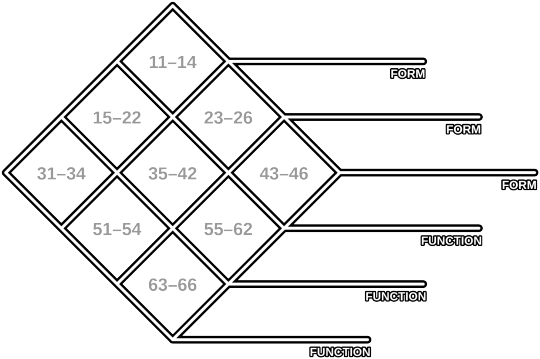
Table 1: Form (d66)
11–12. Blood 13–14. Bones 15–16. Brain 21–22. Claws 23–24. Ears 25–26. Eyes 31–32. Guts 33–34. Hands 35–36. Heart 41–42. Hair 43–44. Legs 45–46. Lungs 51–52. Nose 53–54. Skin 55–56. Tail 61–62. Teeth 63–64. Tongue 65–66. Wings
Table 2: Function (d66)
11–12. Accelerated 13–14. Autonomous 15–16. Auxiliary 21–22. Cryogenic 23–24. Cryptic 25–26. Elastic 31–32. Electric 33–34. Entropic 35–36. Invasive 41–42. Invulnerable 43–44. Kinetic 45–46. Magnetic 51–52. Phasing 53–54. Polymorphic 55–56. Projectile 61–62. Pyrogenic 63–64. Telescopic 65–66. Toxic
Playing the Game
Play proceeds in a series of scenes. In each scene, the GM will set the stage: a challenge to overcome, a peril to escape, a mystery to investigate, etc. Given the nature of your characters, most things will be mysteries to you!
Initial Token Placement
Once the stage has been set, place each of your three tokens on a different square on your Profile Grid. If you have no preference, you can roll d66 for each token and place it in the square whose marked numeric range contains the number you rolled, flipping or re-rolling your result if you get a square which already contains a token. The placement of these tokens represents your initial state when the scene opens. Depending on the nature of your character, this may be reflected by a shifting of internal focus, or by a physical transformation.
Participation
To participate in the scene, simply tell the GM what your character does; the GM will describe how the world responds, and ask what you do next. Whenever you wish – or are forced – to do something more than lurk and observe, you are obliged to make a test.
Making Tests
To make a test, first choose a pair of traits – one Form trait, and one Function trait – with which to face the challenge. For example, if your Form traits are Legs, Tail and Teeth, and your Function traits are Cryptic, Invulnerable and Phasing, you might test your Invulnerable Legs against the trouble at hand.
Next, count the number of tokens present in the rows extending from each of the chosen traits. The illustration below shows which squares would be consulted in the preceding example:
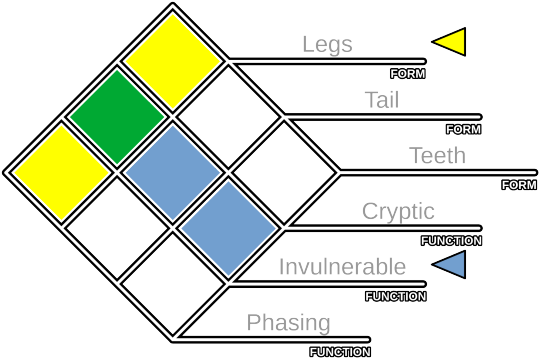
Next, roll a dice pool containing a number of dice equal to the number of tokens present on squares extending from the chosen traits. Do not count a token twice if it's on the square where the two traits intersect (e.g., the green square in the illustration above). In the event that no tokens fall on squares extending from appropriate traits, remember that you are allowed to roll a pool of zero dice by rolling two dice and taking the lowest rather than the highest.
Finally, compare your result to the following table:
1–3. Less than human. Whatever you'd intended to try still happens, but it cannot overcome human opposition (or adversity which would challenge a typical human), and any lasting effects are transitory and easily explained away. 4–5. Mostly human. Your effort can contend with human opposition (or circumstances which would challenge a competent human), and its lasting effects make it obvious that someone (or something) has been interfering with matters. 6. More than human. Your effort easily brushes aside any human opposition, and its lasting effects are impossible to rationalise as anything other than the intervention of inhuman forces.
Without Applicable Traits
In the event that you're forced to make a test and no possible pairing of your traits is applicable, you don't get to roll anything, not even with a pool of zero dice; simply resolve the outcome as though you'd rolled a result of 1–3. Other characters may attempt to preserve you from this fate by assisting you, in which case you roll one die per assisting friend; see below for more details.
Assistance
If you wish to assist another character in making a test, consult your own Profile Grid, considering only those squares which contain tokens. Only the specific pairs of traits represented by the squares on which your tokens fall are eligible for assistance; for example, if one of your tokens falls on the intersection of Cryptic and Teeth, you may assist with Cryptic Teeth, but not any other pair of traits involving Cryptic or Teeth unless those squares also have tokens on them.
If you're able to identify an eligible pair of traits that seems applicable to the test at hand, explain how you're using it to help, and hand the player making the test one extra die. Any number of characters may assist on a given test.
Providing assistance neither requires nor permits your character to adapt (see below) – it needs to be your own test for that!
Adapting
After resolving a test, your character adapts, shifting focus or form to reflect what they've learned. Take one token of your choice from your character sheet, and move it to a different square which doesn't already contain one. You can move any token you wish, but it must end up on a different square than the one it started on unless no valid destinations are available. Adapting is not optional, and must be carried out after every test.
Suffering Strain
If whatever you're making a test against is particularly strenuous or dangerous, you might suffer strain as a consequence. Strain will often be incurred on a result of 1–3, and rarely on a result of 4–5; only the most foolhardy efforts will incur strain even on a result of 6!
To incur strain, roll d66, and place a small X on the square on your Profile Grid whose indicated numeric range contains the number you rolled. If there's a token on that square, immediately move it to an empty square of your choice, unless fewer than three unmarked squares now remain; in that case, simply remove the token entirely.
For the remainder of the scene, tokens may not be moved to any marked square. In addition, if you suffer further strain, and the square indicated by your d66 roll is already marked, your character is incapacitated, and may not participate in tests at all until they recover.
All strain is cleared – and any discarded tokens restored – at the end of each scene. Incapacitated characters also recover at this time.
613 notes
·
View notes
Note
Reading the book, and I'm already loving it. I agree with a lot of the things y'all say in it (players control the characters, not the narrator, etc.), but I was surprised at the strong insistence on 3rd person play.
Personally I like 1st person play because it helps me with immersion. If I play in 3rd person then my mental camera goes 3rd person, which feels more like playing a video game and removes that thrill of embodying someone else and living in a new world.
Usually I see people either take a strong pro 1st person stance, or a noncommittal stance, but this is the first time I've come across a game that insists on the 3rd person. I'm curious about the reasoning behind it. Was it just a philosophical decision, or did it bear out in playtesting that 3rd person was the better method? In the book y'all acknowledge that 3rd person play doesn't eliminate the threat of griefing from bad faith players.
Y'all clearly put a lot of thought into the game, so that really interested me. Could be a good learning opportunity!
I passed this on to one of our team and this is what she had to say:
In addition to our own home table just preferring to play in 3rd person, we believe that perspective is an important element of TTRPGs that doesn't get explored very often in the modern landscape. The games we play are composed of language - not just the words on the page, but the words we say at the table. Changing the verbiage will create a different emotional space, and a different experience. That zoomed out mental camera you describe is part of the point! In any TTRPG, players are always two things: participant, and audience. The narration we employ at the table affects the game world, yes, but we are also the only people there to see it play out. Eureka strongly emphasizes the "audience" side of that equation, and wants to frame the "participant" side as an act of authorship and discovery rather than one of inhabiting the world.
Just on a fundamental level, perspective is a defining part of any media - the camera angle in a movie or video game, the person of a book's prose, who tells the story, and who they tell it for. The way we frame a story changes the response it evokes. As you say, you've seen either strong pro-1st-person stances or neutral ones, but not a strong pro-3rd-person stance. I don't think that's because 1st person is inherently better for this sort of game, I think its because there is a tendency in the hobby right now - for a variety of reasons - to treat TTRPGs like a form of improv theater. That's not a problem in isolation per se, but I think it's one that limits what the medium can be or do. TTRPGs can be improv theater, but is that all they can be?
On a final note, we have also seen the insistence on 1st-person play and the approach of "embodying" a character occasionally cause real harm when the people involved have trouble separating player and character. That's also part of the reason we're so insistent about these being two separate people, because investigators tend to do some pretty messed up things (this being a horror focused game, after all), and we don't want people equivocating their friends with the characters they play when that level of emotional intensity is involved. Many people who play in 1st person are able to engage with that in a healthy way and understand the difference, of course, but I think it's hard to deny that the language makes that equivocation easier.
- @ashweather (person from out team who doesn't normally run this blog)
Adding on myself, another thing that I always like to bring up in this discussion is that first-person verbiage did not used to be so universal! Playing in the hobby even 4 or 5 years ago, you'd see (or at least I would see) a mix of third and first person verbiage at tables, and even people who used both interchangably. It's only in the past few years that third-person verbiage for TTRPGs has gone practically extinct, and i think most of the blame lies at the feet of big-budget "actual play" shows like Critical Role being many people's only reference for how a TTRPG can be played. Critical Role uses first-person, so therefor that's how TTRPGs are played.
I've even had people tell me on multiple separate occassions "that's wrong" when I'm trying to use third-person verbiage for TTRPGs, when playing with rulebooks which explicitly say in their text early on "you can use 1st or 3rd person to describe your character's actions"! (most, if not all, D&D edition rulebooks say this!)
In closing, yeah, if Eureka were a video game, it would be in third-person. Eureka doesn't want you in its world, it wants a character.

#indie ttrpgs#ttrpg#tabletop#indie ttrpg#rpg#ttrpg design#ttrpg tumblr#ttrpg community#ttrpg character#prose#writeblr#writing#d&d#dnd#dungeons & dragons
235 notes
·
View notes
Text
TIME FOR FREELINES HAS COME
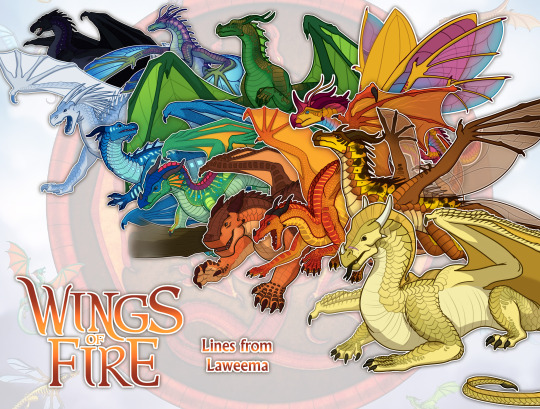
Oh yeah.. these lines have been around for a year and a half, I draw them +- at the end of august of 2022, and honestly, I already dislike them a little, I see a lot of mistakes in them that I would like to fix with new Joy-style freelines, but a little later.. when will it be time to draw them)
I WANT TO POINT OUT THAT:
Although the lines are made in Joy's style, I don't really like dragons without a pelvis, with ears and elbow appendages on the wings, so I fixed these points, although I think in other lines I still add for canonicity …
I also thickened the wings so that they don't fly on toothpicks
And I also removed / added dorsal scales from some dragons, whose back scales in the pics from the book just went nowhere (Rainwing, Nightwing, Icewing, etc.)
And wings are not from the shoulders, because.. Well, they just can't grow there..
All theese things I descrypted in detail in my article in VK, so, you can read it there, if you interested (RU language) - Here
SO THE DESCRIPTION AND WHERE TO DOWNLOAD:
DOWNLOAD LINES >>> Here <<<
In the presented archive there are: > All 10 tribes of Wings of fire + Beetlewings in my view + Stormwingsmy fan tribe + Nightwing Skeleton. > And all of them are made in the style of the artist Joy Ang. > Also in each folder with the tribe there is a folder "Extra" which have additions - Bags. > All files have both separate images and PSDs.
And there are some easy rules of usage:
- You can change, add something of your own. - You can make adopts and sell them. - Do not assign authorship. - Do not sell the line. - Do not erase the watermark. (you can move it, but it must be visible)
Take a closer look:
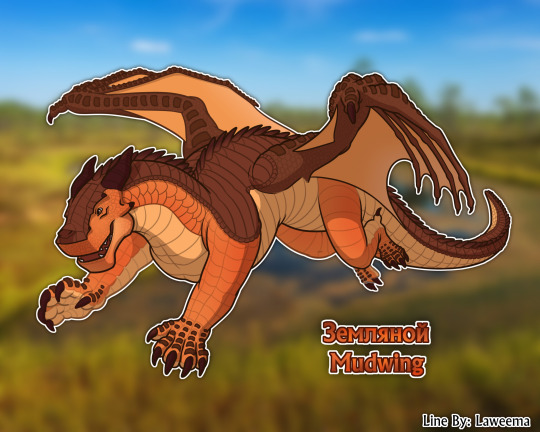
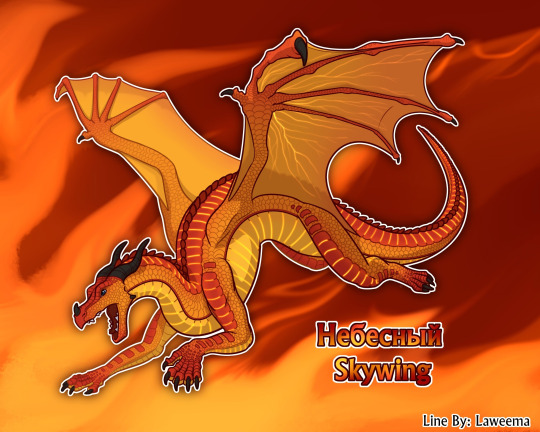
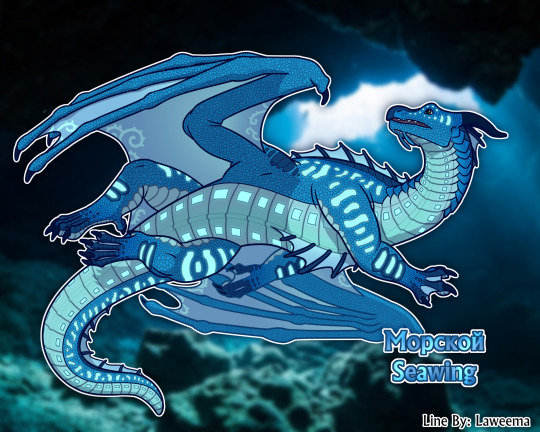
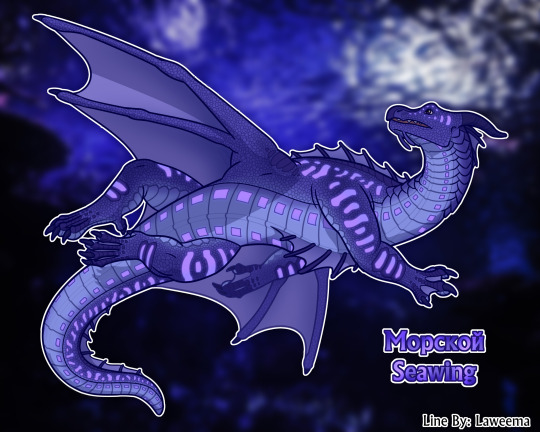
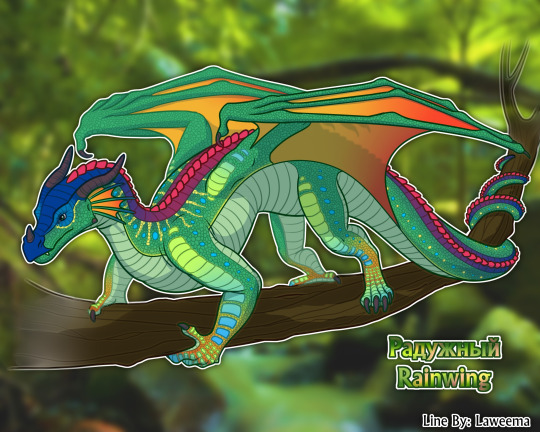
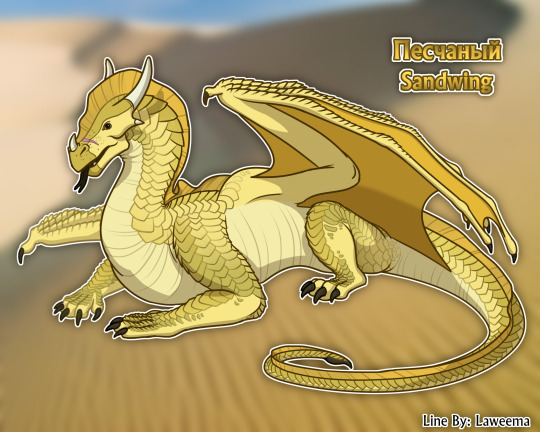
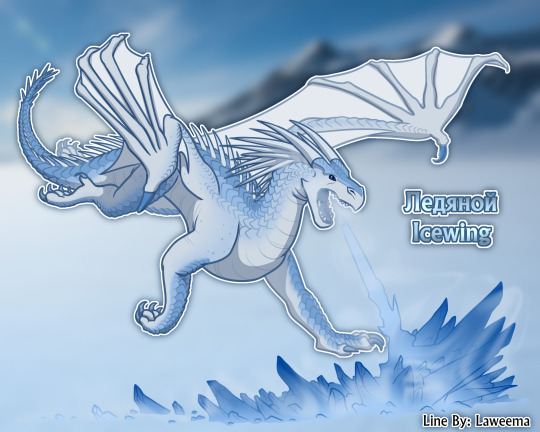

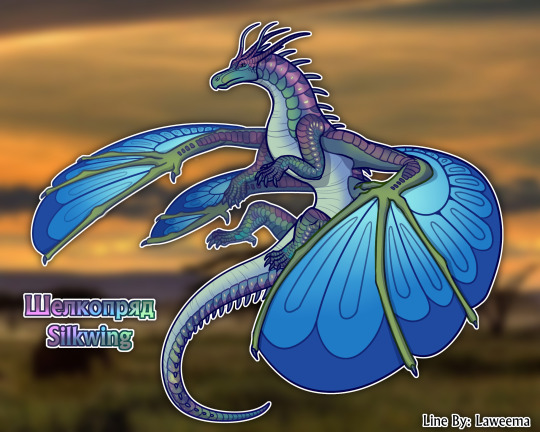
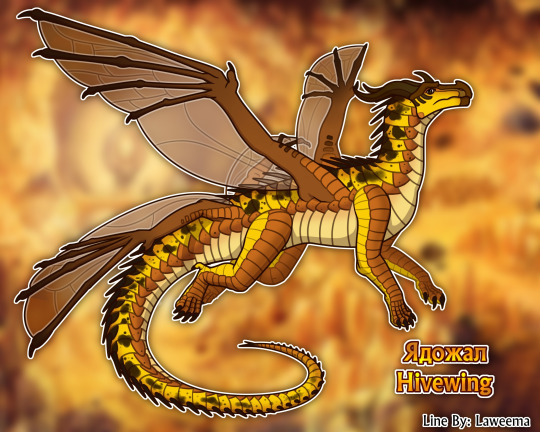
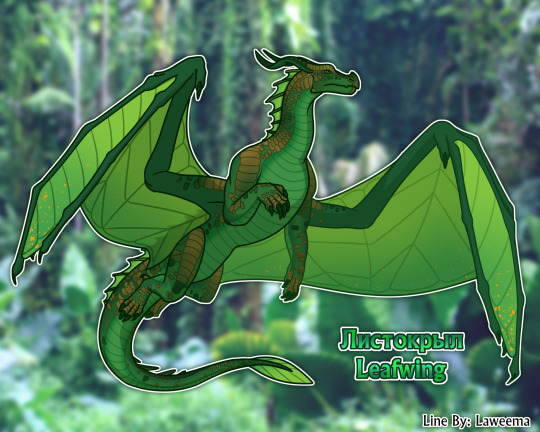
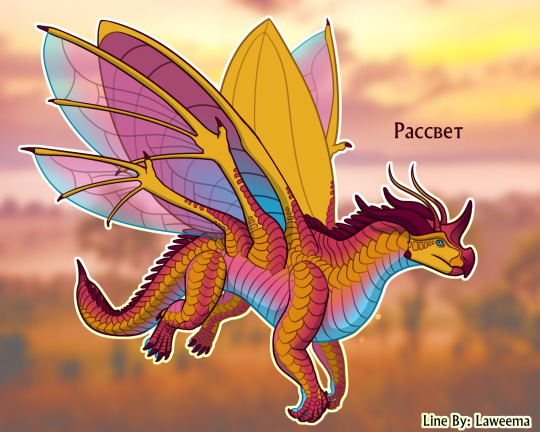

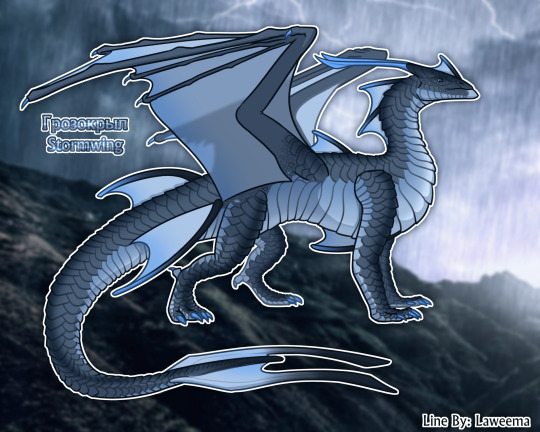
#wings of fire#wings of fire art#dragon#wof#wof art#wof base#lines#free to use#free lineart#beetlewing#wof tribes#joy ang
356 notes
·
View notes
Note
Hey, I'm not here to say ai art isn't art. The whole "you need to be paid for it to be real art!" is goofy. But if I put a prompt into the tool and it makes something based on that prompt then I didn't make it. I didn't put the effort in, and in that sense it isn't mine. What I'm more upset about than whether or not it has soul or whatever (that's up for debate for a lot of human-made art too) is the taking of credit for something you simply did not do. I'm not sure if I've seen you talk about this particular thing cuz there's a lotta silly asks getting dunked on, but I'm curious abt this one.
you can absolutely make art without being the one physically producing it, by "telling someone what to do". directors are artists. choreographers are artists. graphic novel writers who write panel descriptions for artists are artists and indisputably have some share of the authorship of the resulting panels. the same goes for mangakas with apprentices, or for that matter renaissance masters with apprentices, and for art directors. removing the other people involved in such an arrangement gives you a greater share of authorship, not a lesser one.
& the idea that art requires "effort" is reactionary. it's a protestant-work-ethic-esque valorisation of effort for its own sake. art can be easy. many many technological innovations have created easier ways to do things -- did you know that graphic designers used to have to manually place every written character and image on a spread through a time-consuming and arduous process called paste-up? now the exact same work can be done in minutes with a few clicks because of digital typefaces. digital art also saw the exact same arguments being made against it fifteen odd years ago -- 'digital artists have stabilizers and shape tools and layers and filters and brushes and an undo button, they're not real artists because they're not putting in the effort'.
i think it's interesting how anti AI art crusaders have this curious contradiction in their arguments -- they (correctly) identify that a computer program has no agency, intentionality, or creativity, but when a human and a computer both contribute to a finished product they ascribe the computer full authorship. it just doesn't add up! mi-24 attack helicopter blushing demurely

421 notes
·
View notes
Text
Shakespeare Genre Battle: Tragedies
I'm doing all of them. Don't worry if yours isn't in this poll.
I am including some things with disputed authorship, collaboration, or apocrypha just because.
#Troilus and Cressida#Coriolanus#Titus Andronicus#Romeo and Juliet#Timon of Athens#Julius Caesar#Macbeth#Hamlet#King Lear#Othello#Antony and Cleopatra#Cymbeline#Shakespeare
210 notes
·
View notes